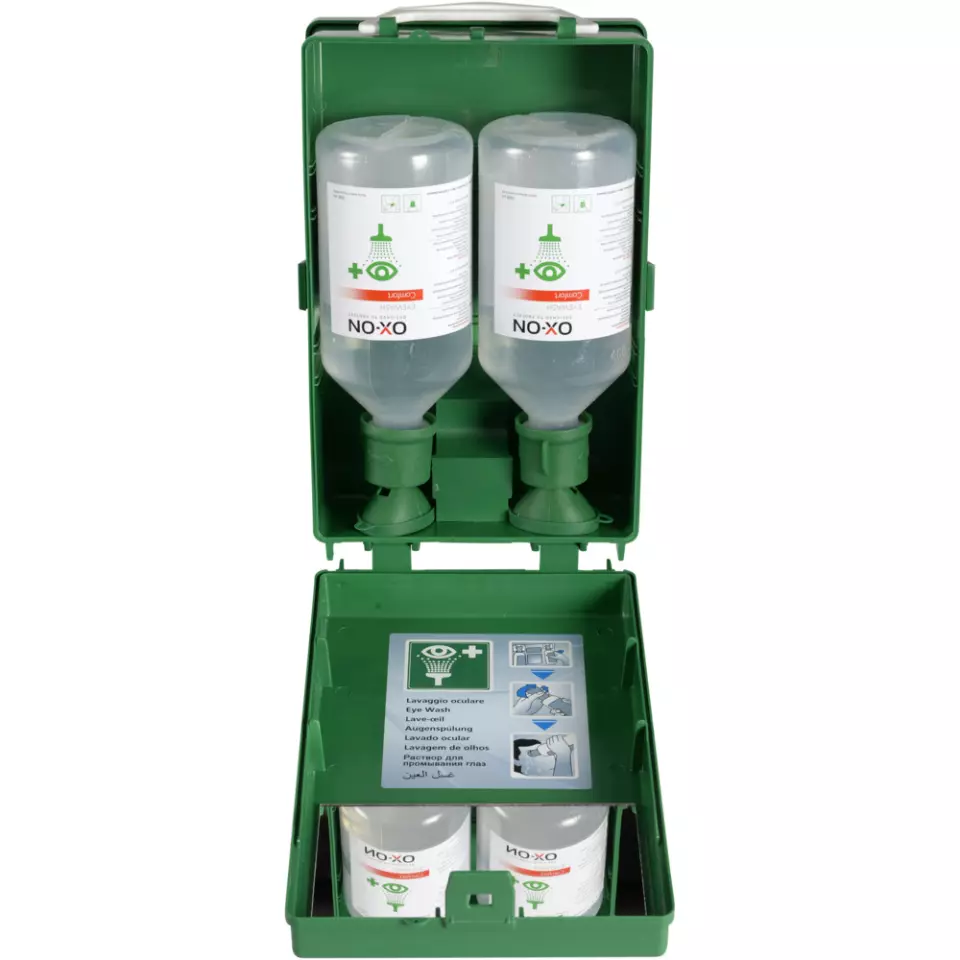OX-ON Eyewash Station with 2 x 500 ml Bottles
4.9 / 5
Product description
OX-ON Eyewash station w. 2 x 500 ml bottles with eye cup gives you optimal help if you get dust or other foreign objects in your eye. This eyewash contains 0.9% sterile sodium chloride (the same saline solution as in the human eye) and has an ergonomic eye cup. The bottle opens easily and can be handled with one hand. The fluid flow is efficient and ensures that the eye is rinsed calmly and thoroughly. The shelf life is 5 years. Content: 91196 OX-ON Eyewash 500 ml with eye cup.
- Chemical Resistance
- Radioactive Contamination
- Electrical Protection
Standards and labels
Abena Ab delivery terms
Free delivery when you order more than 1 650,00 kr from Abena Ab
Supplier shipping fee 55,20 kr
Brand minimum 0,00 kr
Price available on request
Shipping fee is 55,20 kr for orders under 1 650,00 kr
A package contains 10 pieces
Need larger quantities?
Other products you may like
Recently viewed
Other products you may like
Similar products you may like
Autonomous sourcing platform
The most efficient way to source and order supplies for your operations



